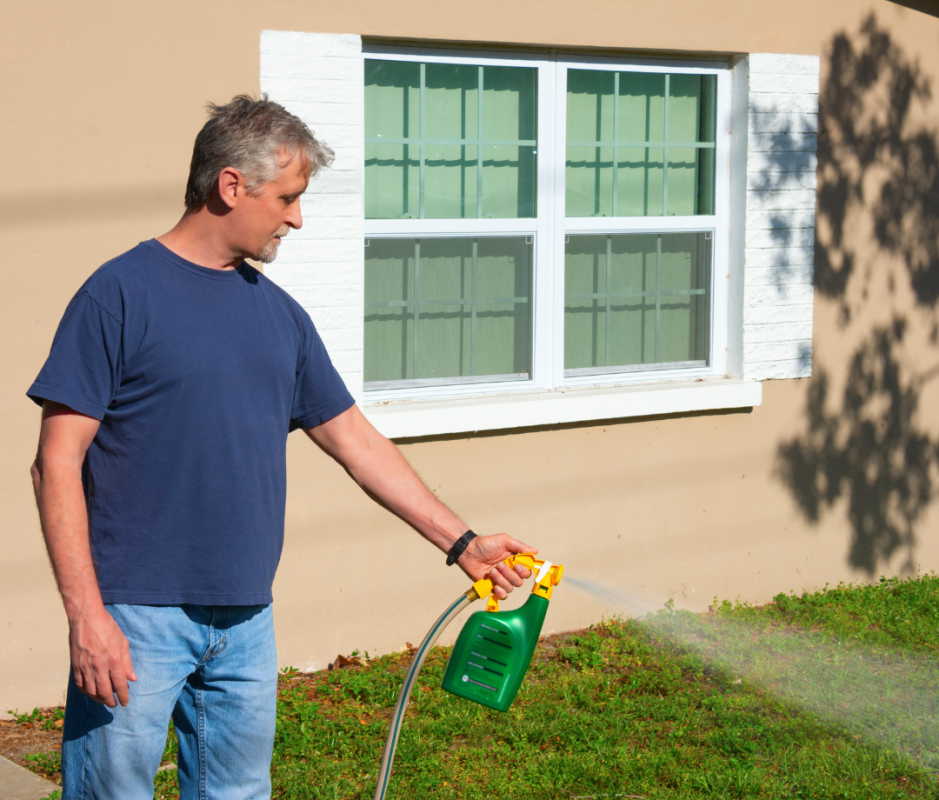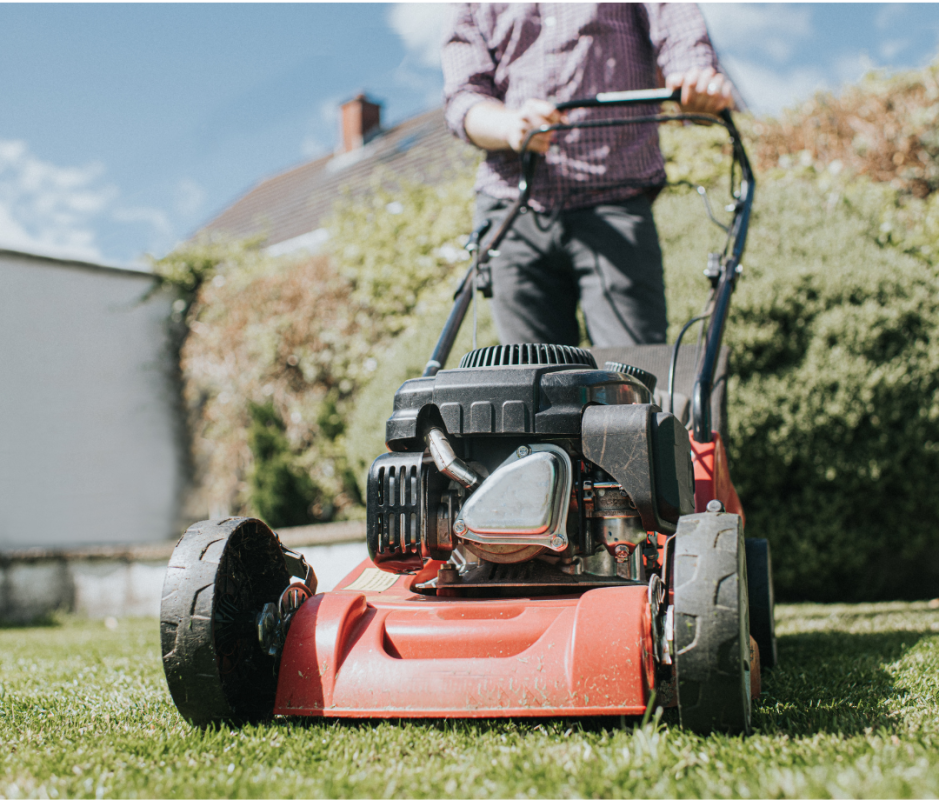Keeping your lawn healthy and thriving throughout the growing season begins with spring lawn fertilization. But as any lawn-having guy knows, summer can be brutal to grass due to high temperatures, irregular rainfall, and increased foot traffic, all of which can affect the overall growth and appearance of your yard. That’s why it’s important to apply a late-summer lawn fertilizer in August or September to end the season strong and prepare your sod for the coming cold months.
If you’re new to fertilizing grass in August, don’t worry. We have everything you need to know to figure out the best way to apply late-summer lawn fertilizer, plus all the need-to-knows for fall grass fertilizing and maintenance. Check out the best August and September lawn fertilizing tips below.
Determine What Your Lawn Needs
Figuring out what type of grass you have and what your soil needs are key steps in caring for your lawn and minimizing the toll summertime can take on your grass.
Grass type
Grass typically falls into one of two categories: warm or cool grasses. Warm grasses are suited for sunny and hot summers and mild winters—and they’re usually found in areas with those weather conditions. Cool grasses, on the other hand, are the best option for (and usually found in) regions where summers are warm but winters are cold and reach freezing temperatures. Therefore, your region’s climate will likely point you in the right direction about what type of grass you have. (Though you may come to find you have a mix of both types of grass throughout your lawn.) You can also use a plant or grass-identification app to tell you more about what’s in your yard.
Soil test
Your soil is the primary source of nutrients for your lawn, and healthy soil equals healthy grass. Understanding the state of your ground, especially the pH (acidity) and nutrient levels, will help you create a care plan and choose the best late summer lawn fertilizer.
There are two main ways to test your soil. One option is a DIY home test kit, which will give you an overall idea of how your soil is doing and what nutrients are needed. The second, more accurate and advanced option, can be done through professional environmental laboratory testing. If you choose to perform a laboratory test, you won’t have to test your soil for another three to five years. Because DIY home testing isn’t as accurate, it should be done more often.
Related: Want to Master the Art of Landscaping? We Rated the Best Lawn and Garden Tools of 2025
How to Choose the Right Fertilizer for Late Summer and September
Once you’ve identified your grass type and the health of your soil, it’s time to pick a fertilizer based on your findings. You can head online and buy a fertilizer with the nutrients your topsoil is lacking, or go to your local nursery or home improvement store and talk to a garden specialist who can help you choose a fertilizer that meets your soil and lawn’s needs.
Late-summer fertilizers
A fertilizer designed for late summer application will give your lawn the necessary nutrients to end the season strong, so your yard will be ready for the cold months ahead.
You can choose between a granular or liquid fertilizer. Granular fertilizers need to be spread evenly across the lawn to avoid burning the grass, while liquid fertilizers are easier to apply uniformly around the yard.

Getty Images
Slow-release nitrogen-rich fertilizers
Nitrogen helps grass grow. That’s why it’s recommended to apply nitrogen-based fertilizers at the beginning of the season to encourage healthy and steady growth. However, in late summer, your lawn’s growth is starting to slow down and doesn’t need as much nitrogen. That’s why you should choose a fertilizer with a slow-release formula for late summer or fall—it’ll provide only the amount of nitrogen needed to boost growth towards the end of the warm season. Otherwise, you’ll end up having to mow your grass more often.
How to Prep Your Lawn for Fertilizer
Here’s what you need to do to make sure your grass gets the most out of your fertilizer and your lawn gets the best results.
- Mow your grass two to three days before fertilizing your grass.
- Right after you cut your grass, water it thoroughly for about 45 minutes to an hour, aiming to soak your lawn in about an inch of water.
- On the day you plan on applying the fertilizer, read the manufacturer’s instructions carefully, set your spreader to the correct setting (if using a granular formula), and start applying it evenly all over your yard.
Related: U.S. Man Goes Viral for His Innovative Lawn Mower Creation
How to Water Your Lawn After You Fertilize Your Grass
When you water your grass will depend on the type of fertilizer you apply. For granular fertilizers, you’ll want to water your grass immediately to help the fertilizer make its way down into the ground and start composting and feeding your lawn. On the other hand, if you choose a liquid fertilizer, it’s recommended to wait at least a couple of hours or more before watering to allow for the liquid to be fully absorbed. The last thing you want to do is wash away the fertilizer you’ve just applied.
For both types of fertilizers, be sure to water just enough to moisten the topsoil. Then, repeat this step every two to three days. If it rains the day you add the fertilizer, you can skip watering your yard altogether.
How to Tell if Your Fertilizer Is Working
After you apply your fertilizer, it usually takes between two and three days to see results, but it can take up to 10 days. At first, you’ll notice that your grass is turning greener in certain spots, but eventually it should appear uniformly greener throughout your lawn.

Getty Images
End-Of-Summer Lawn Care Tips
Summer is when your grass faces the most stress due to heat, infrequent rainfall, and increased foot traffic. Here are some ways you can give your yard a little TLC as the hottest season winds down.
- Water your grass once a week, aiming for about an inch of water, keeping in mind to stay compliant with any water regulations your town has in place.
- Set your lawnmower to the highest setting, aiming to cut only about one-third of an inch each week. Keeping your grass on the tall side will help it preserve water longer and handle the heat better.
- Remove weeds throughout your lawn to encourage your grass to grow greener and healthier.
- If you see any signs of pests in your lawn, be sure to treat them before they take over your grass.
- Fertilize your grass at the beginning of and towards the end of the summer or in the early fall.
Why should you fertilize your lawn in August or September?
Fertilizing grass in August gives your lawn a boost of nutrients before colder weather sets in. Alternatively, if you live in a hot weather climate, such as in the southern United States, you’ll want to wait to apply fertilizer until the second week of September.
Can I use leftover fertilizer from the spring?
Using leftover fertilizer from the spring is not advised. Spring fertilizer is a fast-acting formula designed to help your grass grow stronger and quickly. Using leftover fertilizer from the spring can cause your grass to potentially “burn” or have a growth spurt, resulting in extra, unnecessary mowing. The right fertilizer to use in the late summer is a slow-release fertilizer, which ensures that it feeds only the necessary nutrients gradually to the soil and grass.
How can I tell if my lawn needs to be fertilized in August or September?
In the summer, grass grows at a slower pace compared to the spring. By August or September, your lawn will likely be showing signs of wear from all the heat and backyard gatherings you’ve hosted throughout the season. Here are some signs your grass needs to be fertilized. Your lawn:
- Has changed from green to a brownish color
- Is growing at an unusually slow pace
- Is overrun with weeds or pests
- Has thin and bare spots
Another way to see if your lawn needs to be fertilized is to have your soil tested to determine if it has enough nutrients for your lawn to thrive.
